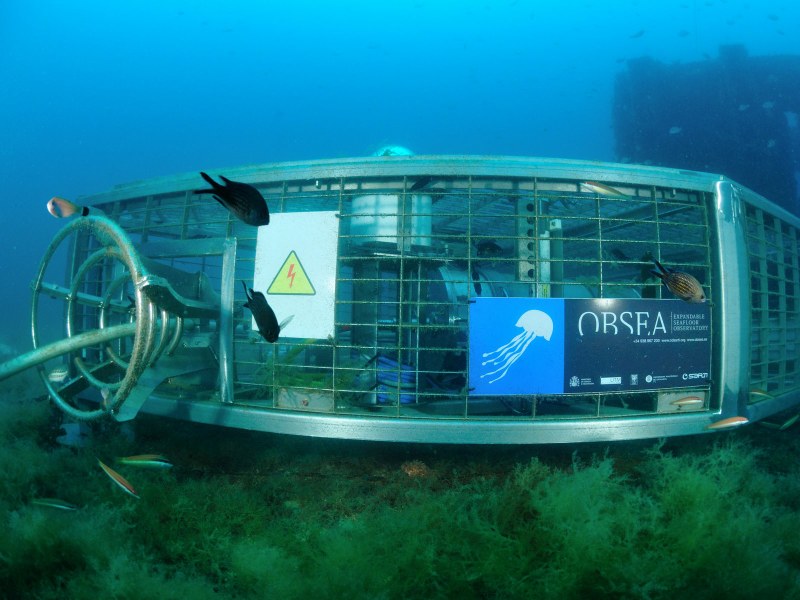OBSEA, the underwater cabled observatory
Dec 18, 2013
The Expandable Seafloor Observatory (OBSEA), an equipment installed in 2009 by the Technological Development Centre of Remote Acquisition and Data processing Systems (SARTI) of the UPC, is connected with 4 km of cable to the coast of Vilanova i la Geltrú (Barcelona, Spain) and placed at a depth of 20 meters in a fishing protected area.
The main advantage of the cabled observatory is the capacity to feed the station from land with up to 3.6kW and the high bandwidth communication link of 1 Gbps. This link gives the information in real time and avoids the drawbacks of battery powered systems. The implemented solution is an optical ethernet network that continuously transmits data from the connected oceanographic instruments. With OBSEA we can observe in real-time multiple parameters of the marine environment.
The buoy is an extension of the OBSEA observatory that works as surface platform for measuring oceanographic and environmental parameters. In addition it is also a test bed for sensors and oceanographic equipment that takes advantage of the OBSEA infrastructure and connectivity.
"MEDITERRANI" the new CosmoCaixa exihibiton incorporates images from the OBSEA
The main advantage of the cabled observatory is the capacity to feed the station from land with up to 3.6kW and the high bandwidth communication link of 1 Gbps. This link gives the information in real time and avoids the drawbacks of battery powered systems. The implemented solution is an optical ethernet network that continuously transmits data from the connected oceanographic instruments. With OBSEA we can observe in real-time multiple parameters of the marine environment.
The buoy is an extension of the OBSEA observatory that works as surface platform for measuring oceanographic and environmental parameters. In addition it is also a test bed for sensors and oceanographic equipment that takes advantage of the OBSEA infrastructure and connectivity.
"MEDITERRANI" the new CosmoCaixa exihibiton incorporates images from the OBSEA

Share: